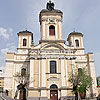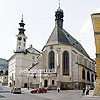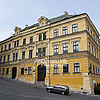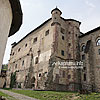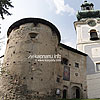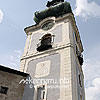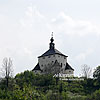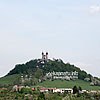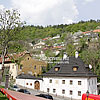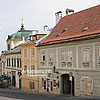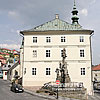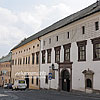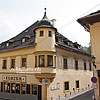Banská Štiavnica
Banska Shtyavnitsa (Slovak: Banská Štiavnica) is a town in central Slovakia, which is the capital of the same name district — Banská Štiavnica. The town with the population of about 11,000 people is located at the foot of Štiavnica Mountains (Štiavnické vrchy).
Nowadays Banská Štiavnica is a popular tourist destination, but in the past it was known as an industrial and mining settlement. Mining began here in the IIIrd century BC, probably by Celts. The settlement was first mentioned in a written document from 1156, where it was described as a mining town. In the annals of 1217 the silver mining nearby the settlement was mentioned. Banská Štiavnica gained the status of a town in 1238.
From the XIIIth century the town was populated by German colonists from Tyrol and Saxony. In 1443 the town got into the zone of a strong earthquake which almost completely destroyed Banská Štiavnica. In the middle of the XVth century the settlement was rebuilt and new fortifications, including two castles nowadays called the Old and the New one, was made for repelling the attacks of the Ottoman troops. In 1627 Banská Štiavnica gained a worldwide fame as a town where the explosives were used in mining for the first time in the history. In 1735 the first in Hungary mining school was opened there and in 1763 it was transformed into the Academy of Mining. In 1782 Banská Štiavnica was the 3rd largest city in Hungary after Bratislava and Debrecen. In the XVIIIth century the town began to lose its industrial importance.
- The building of Academy of Forestry and Mining (XVIIIth century)
- Chapel of Mary of the Snow and St. John of Nepomuk or Kaplnka Panny Márie Snežnej (1714)
- St. Elizabeth church or Kostolík sv. Alžbety (XIIIth century)
- Church of St. Catherine or Kostol sv. Kataríny (1480)
- Piarg gate (XVIIIth century)
- The New Castle or Nový zámok (1564-1571)
- The Old Castle or Starý zámok (XVIth century)
- Evangelical church or Evanjelický kostol (1796)

 Ukraine
Ukraine Poland
Poland Slovakia
Slovakia
 Українською
Українською